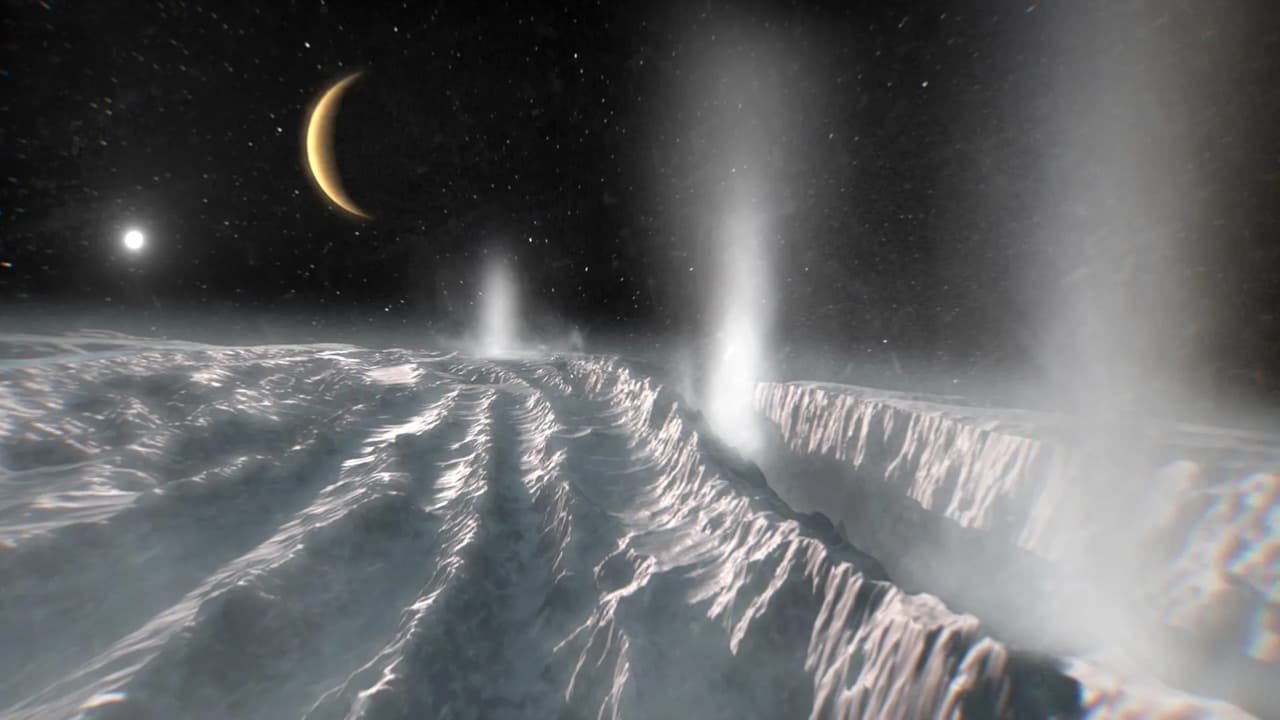Cassini data reveals complex organic molecules in Enceladus’s icy jets. The findings suggest its underground ocean may host life-like chemistry, strengthening plans for an ESA mission to explore the moon’s habitability.
New insights from data collected by NASA’s Cassini spacecraft suggest that Saturn’s icy moon Enceladus could be a prime candidate for hosting life. Scientists analyzing fresh ice grains ejected from the moon have discovered complex organic molecules—key ingredients that could support life. These findings strengthen the idea that Enceladus’s hidden ocean might contain chemistry similar to what sparks life on Earth.
Published in Nature Astronomy on October 1, 2025, the study adds weight to plans for a European Space Agency (ESA) mission to orbit and land on Enceladus, potentially sampling its surface and jets directly.
A Hidden Ocean Beneath the Ice
Cassini first detected Enceladus’s underground ocean in 2005. Geysers at the moon’s south pole shoot water and ice grains into space, some forming a ring around Saturn. Previous analyses had already found organic molecules in these ice grains, including precursors to amino acids.
Lead author Nozair Khawaja explains, “Cassini was constantly sampling Enceladus through Saturn’s E ring. We knew organic molecules were present, but we wanted to see what freshly ejected ice could reveal.”
In 2008, Cassini flew through a plume of freshly ejected ice grains, which struck the spacecraft’s Cosmic Dust Analyzer at high speeds—18 km/s. This allowed scientists to detect molecules that might have been hidden in earlier, slower flybys, as high-speed impacts prevent water clusters from masking organic signals.
New Molecules Detected
The analysis confirmed that some previously known molecules are produced within Enceladus’s ocean. More intriguingly, entirely new organic compounds were identified. These include aliphatic and cyclic esters, alkenes, ethers, and molecules potentially containing nitrogen and oxygen—types of compounds that, on Earth, participate in reactions leading to life-essential molecules.
“These discoveries suggest multiple pathways from simple organics to more complex, biologically relevant compounds,” Khawaja said. “It significantly increases the likelihood that Enceladus could support life.”
Co-author Frank Postberg emphasized, “The freshly ejected ice proves that complex molecules in the E ring are not merely altered by space exposure—they exist in Enceladus’s ocean right now.”
ESA’s Cassini project scientist Nicolas Altobelli added, “It’s amazing to uncover new findings from data collected almost two decades ago. This highlights the enduring value of our space missions and sets the stage for upcoming explorations of Saturn and Jupiter’s icy moons.”
Looking Ahead: A Dedicated ESA Mission
ESA is already studying a mission to return to Enceladus, with plans to fly through its jets and potentially land on its icy surface. The goal is to directly sample the environment and search for signs of life. Enceladus meets all criteria for habitability: liquid water, energy sources, essential chemical elements, and complex organic molecules.
“Even if we don’t find life, the findings would be groundbreaking,” Khawaja notes. “It would challenge our understanding of why life arises when conditions are favorable.”
This discovery not only strengthens the case for exploring Enceladus but also underscores the potential of icy moons as windows into the origins of life beyond Earth.
